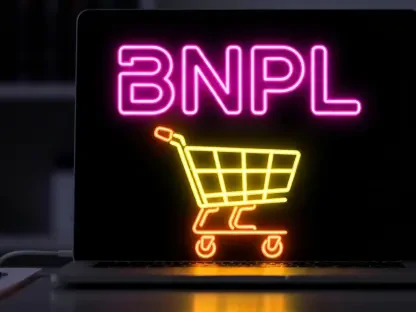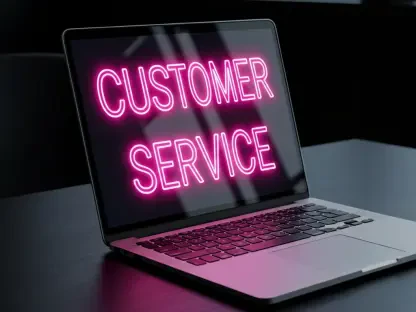Imagine a business customer urgently needing a specific component for a critical project, only to find themselves navigating a frustrating maze of incomplete information and unhelpful distributor interactions. This scenario is far too common in the B2B sector, where manufacturers rely heavily on distributors to bridge the gap between their products and end customers. While distributors play a vital role in expanding market reach, their effectiveness can sometimes falter, leading to lost sales and dissatisfied clients. The root of the problem often lies not with the distributors themselves, but with the support and resources provided by manufacturers. When critical product details are missing or inaccessible, customers like the one in this scenario are left guessing, often resulting in incorrect purchases and costly returns. This raises an important question: Are distributors unintentionally becoming a barrier to revenue growth due to systemic gaps in information and training? Addressing this issue could unlock significant sales potential.
1. Identifying the Core Issue in Distributor Networks
The challenge many manufacturers face with their distributor networks often stems from a critical lack of detailed product information available to both the distributor representatives and the end customers. When a customer approaches a distributor seeking a specific part, they expect knowledgeable assistance. However, distributor reps frequently handle thousands of products, making it nearly impossible to be experts on each item. Without comprehensive data from the manufacturer—such as spec sheets, manuals, or troubleshooting guides—these reps are limited to the same basic online descriptions accessible to the customer. This information gap creates uncertainty, leading to hesitation or incorrect purchases. The result is a frustrating experience for the customer, who may return the product or abandon the search altogether. This not only impacts immediate sales but also risks damaging the manufacturer’s reputation in the long term, as customers may seek more reliable alternatives.
Another layer of complexity arises when considering the ripple effects of these information gaps on customer trust and loyalty. A single negative experience, such as receiving the wrong part due to inadequate product details, can deter a customer from engaging with the same manufacturer or distributor in the future. Reports from industry bodies highlight a growing trend of return rates in retail, and similar patterns are evident in B2B transactions. The financial burden of returns, coupled with the time lost in resolving issues, places unnecessary strain on all parties involved. Manufacturers must recognize that their role extends beyond production; they are responsible for equipping distributors with the tools needed to succeed. Without addressing this foundational issue, the cycle of miscommunication and dissatisfaction will persist, ultimately eroding potential revenue streams and market share.
2. Strategies to Empower Distributors and Boost Sales
To transform distributors from potential sales barriers into powerful revenue drivers, manufacturers must prioritize the creation and dissemination of comprehensive product resources. This begins with investing in customer research to understand the mindset of buyers, including their desires, concerns, and frequently asked questions. Armed with these insights, manufacturers can develop detailed materials such as in-depth product descriptions, how-to guides, FAQs, and user manuals. These resources should be readily available on the manufacturer’s website, allowing customers to access accurate information before approaching a distributor. By ensuring that both customers and distributor reps have access to the same high-quality data, manufacturers can significantly reduce the likelihood of errors and enhance the overall buying experience, paving the way for increased sales.
Beyond providing static resources, manufacturers should focus on ongoing training and support for distributor representatives to keep them informed and confident. Regular updates through concise texts or emails can address common customer queries and highlight new materials or product changes. Additionally, implementing advanced tools like AI agents can revolutionize the process. These agents, drawing from a private library of detailed product information, can answer specific customer questions in real time, while also allowing manufacturers to monitor trends and identify emerging sales obstacles. Though this requires significant effort and investment, the potential for boosted sales and customer satisfaction far outweighs the initial costs. Empowering distributors in this way ensures they are not just intermediaries, but true partners in driving revenue growth.
3. Building a Future of Seamless Sales Collaboration
Reflecting on the challenges faced, it becomes evident that the disconnect between manufacturers and distributors has long hindered sales potential through preventable missteps. The frustration of customers, unable to secure the right products due to inadequate information, underscores a systemic issue that demands urgent attention. Manufacturers who take responsibility by enhancing product data and distributor training see marked improvements in customer satisfaction and reduced return rates. These efforts, though resource-intensive, prove to be a cornerstone in rebuilding trust and streamlining transactions.
Looking ahead, the focus should shift to sustainable collaboration between manufacturers and distributors to prevent such issues from resurfacing. Exploring innovative technologies, such as AI-driven support systems, can offer real-time solutions to customer queries while providing valuable data for continuous improvement. Additionally, establishing regular feedback loops with distributors can help manufacturers stay attuned to evolving needs on the ground. By committing to these actionable steps, the path to stronger sales performance and enduring customer relationships becomes clearer, ensuring that distributors are allies in revenue growth rather than obstacles.









